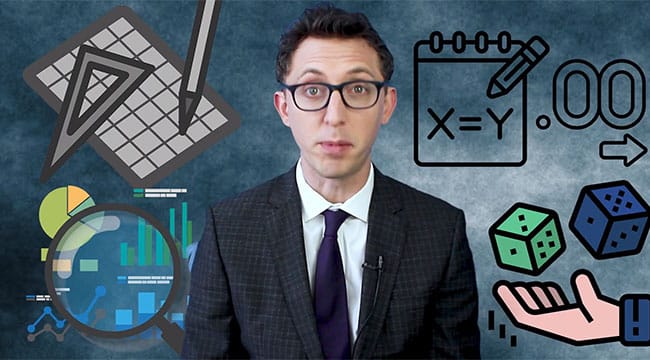The Secondary School Admissions Test(SSAT) measures students’ verbal, math, and reading skills. The SSAT is most commonly used when students are seeking admittance to an independent or private school. The test results are used by many independent/private school’s admissions departments as a part of an applicant’s admissions process.
SSAT FORMAT AND TEST DATES
WHAT IS THE SSAT?
SSAT FORMAT
The SSAT is administered in three separate levels: Elementary Level, Middle Level, and Upper Level. All three levels have three scored sections (Quantitative, Reading, Verbal) and two unscored sections (Writing and Experimental). The SSAT levels are separated by the grades students are currently in rather than the grade they’re seeking admission to.
Elementary Level (grades 3-4)
| SSAT Test Section | # of Questions and Types | Content | Timing |
|---|---|---|---|
| QUANTITATIVE | 30 multiple-choice | Basic addition, subtraction, multiplication, and division; Place value; Ordering of numbers; Fractions; Basic concepts of geometry; Basic concepts of measurement; Interpretation of graphs | 30 minutes |
| VERBAL | 30 multiple-choice | Vocabulary; Analogies | 20 minutes |
| READING | 28 multiple-choice | Locating information in 4 short passages; Demonstrate comprehension and understanding of key ideas; Distinguishing literal from nonliteral language | 30 minutes |
| WRITING | 1 prompt | Written response to picture prompt. This section is not scored. | 15 minutes |
| EXPERIMENTAL | 15-17 multiple-choice | Mixed content of verbal, reading, and math. This section is not scored. | 15 minutes |
Middle Level (grades 5-7) & Upper Level (grades 8-11)
| SSAT Test Section | # of Questions and Types | Content | Timing |
|---|---|---|---|
| WRITING | 1 prompt | Written response to a creative writing prompt. This section is not scored. | 25 minutes |
| QUANTITATIVE 1 | 25 multiple-choice | Arithmetic; Algebra; Geometry | 30 minutes |
| READING | 40 multiple-choice | Recognize a main idea; Locate details; Make inferences; Determine the author’s purpose; Understand and evaluate opinions/arguments; Make predictions based on information in the passage/td> | 40 minutes |
| VERBAL | 60 multiple-choice | Synonyms; Analogies | 30 minutes |
| QUANTITATIVE 2 | 25 multiple-choice | Arithmetic; Algebra; Geometry | 30 minutes |
| EXPERIMENTAL | 16 multiple-choice | 6 verbal, 5 reading, and 5 quantitative questions. This section is not scored. | 15 minutes |
SSAT SCORING/GUESSING PENALTY
The SSAT Middle and Upper Levels award one point for each correct answer and deduct one quarter of a point for each incorrect answer. Unanswered questions neither gain or lose points. Since guessing can result in a penalty, it is crucial to eliminate one or more choices before guessing. Your tutor will help you master these skills. The Elementary Level does not penalize for wrong answers.
The SSAT Middle and Upper scoring model includes raw scores, which are found by subtracting a quarter of wrong answers from total correct answers. The Elementary scoring model’s raw scores are calculated by total number of correct answers. Raw scores are then be converted into scaled scores which depends on test difficulty. For a more detailed breakdown of scaled scores, please see the table below. Lastly, percentiles are calculated from 1% to 99% to show how a student compares to others of the same gender and grade level.
| Level | Section Scaled Score Range | Total Scaled Score Range |
|---|---|---|
| ELEMENTARY LEVEL | Quantitative: 300-600 Verbal: 300-600 Reading: 300-600 |
900-1800 |
| MIDDLE LEVEL | Quantitative: 440-710 Verbal: 440-710 Reading: 440-710 |
1320-2130 |
| UPPER LEVEL | Quantitative: 500-800 Verbal: 500-800 Reading: 500-800 |
1500-2400 |
UNSCORED SECTIONS
Although the Writing section is not scored, it should still be taken seriously by students. A completed Writing section is photocopied and sent to all of the student’s identified prospective schools as a writing sample.This is an opportunity for students to show their creative writing abilities, as well as analytical skills and ability to respond to a prompt.
Alternatively, the Experimental section (also not scored) is not sent to schools. These Experimental test questions are purely for SSAT testing development.
SSAT TEST DATES
The SSAT offers computer-based at-home testing, computer-based testing at Prometric Test Centers, and paper-based testing. Registration and dates for paper testing will be released on August 1, 2025. Computer-based tests are offered on a regular basis and can be scheduled here: SSAT At-Home Registration or SSAT Prometric Registration
Be sure to check with the admissions department of your prospective school(s) to ensure your chosen testing date(s) meet their score results deadline.
To view testing updates, please reference this link. To view the official release of test dates, please reference this link.
ADDITIONAL RESOURCES
Don’t stop here! Check out our blog for new posts about preparing for the SSAT. Below are a few posts you may find useful.
3 KEY QUESTIONS ADMISSIONS COMMITTEES CONSIDER
So you’ve submitted your application and someone from the school of your dreams called back to schedule an interview. Frightened? Overwhelmed? Don’t be… we’ve broken down the three main areas that admissions officers evaluate when interviewing potential applicants… READ MORE
HSPT vs. ISEE vs. SSAT
If your child is applying to independent or Catholic schools, you are probably familiar with the different entrance exams that schools utilize to help select students for admission. These tests serve to gauge the applicant’s academic level compared… READ MORE
THE ISEE vs. THE SSAT
Most independent schools require a standardized test as part of the admissions process, usually the ISEE or the SSAT. Many parents and students ask the question: What’s the difference? READ MORE





